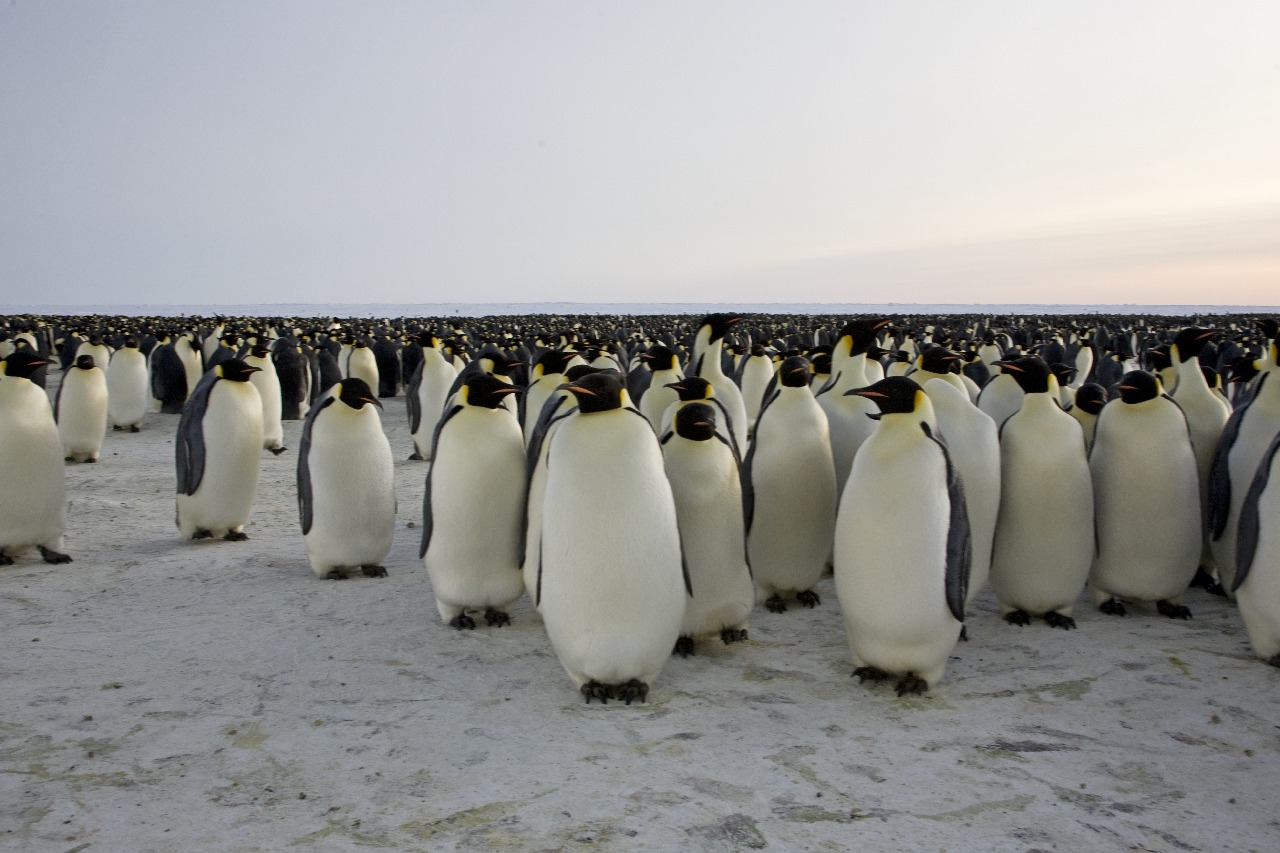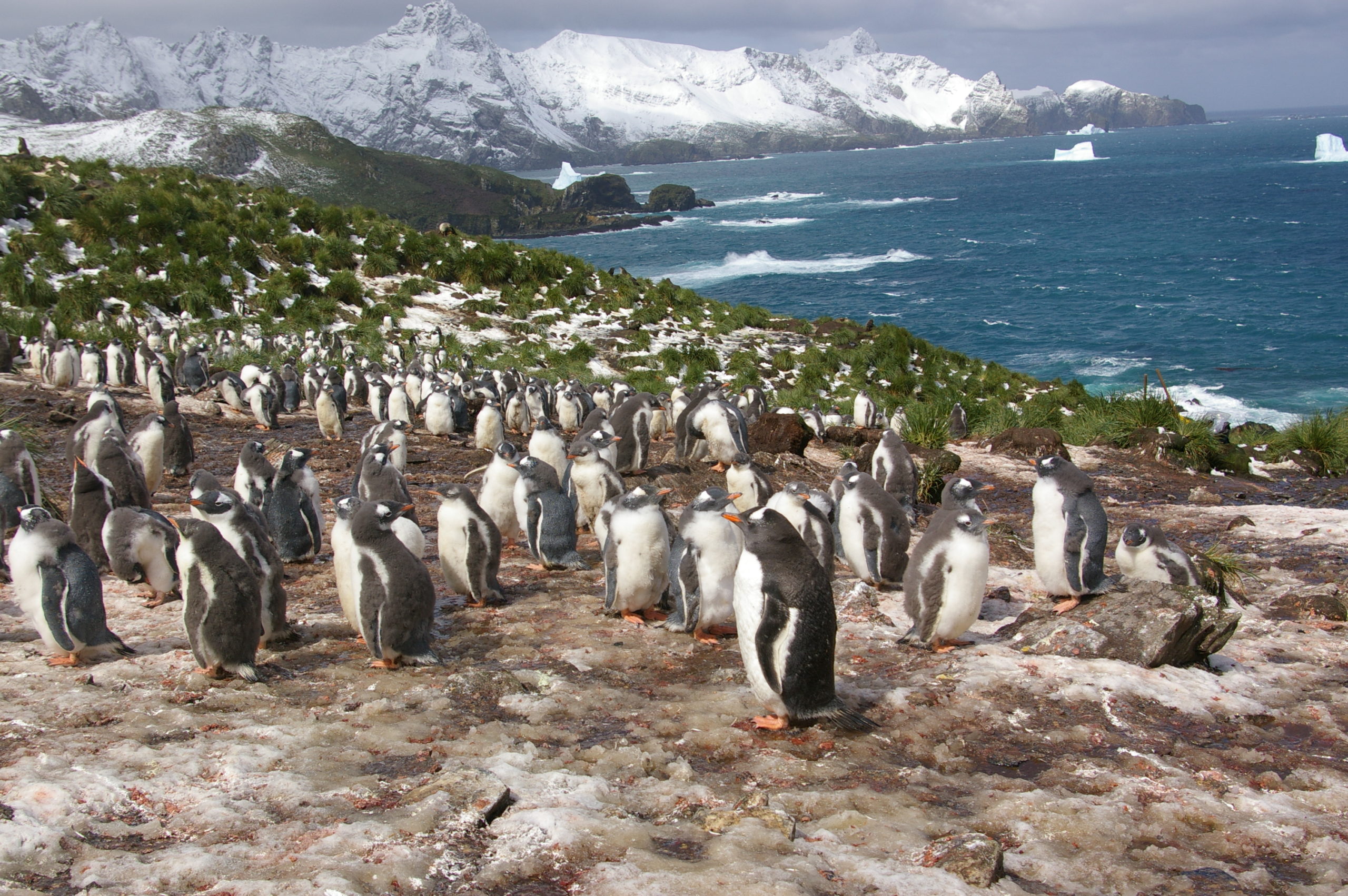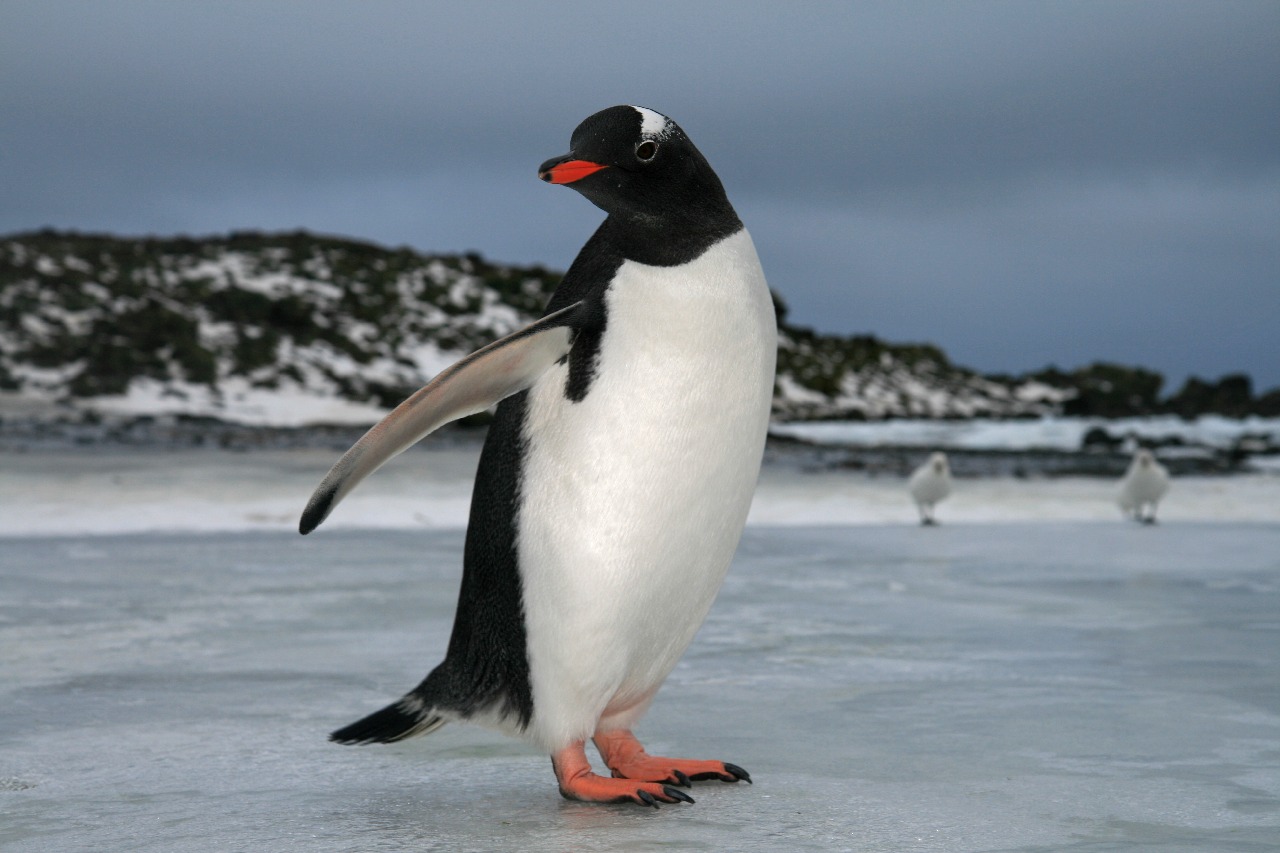How many penguins are in Antarctica?
25 April, 2023
No, it’s not a Penguin joke! This World Penguin Day (25 April 2023) we spoke to some of our resident experts, Mike Dunn and Peter Fretwell, to find out more about the research going on to monitor Antarctic penguin populations.
It would be almost impossible to count exactly how many penguins there are in Antarctica – many colonies live in remote and inhospitable landscapes around the Antarctic coastline where temperatures reach a chilly -50°C, and humans would struggle to go. However, we can rely on satellite images and Artificial Intelligence technology to identify, count and monitor these hard-to-reach penguin populations.
Locating new colonies
Here at British Antarctic Survey, we’ve been locating, counting and studying emperor penguin colonies using satellite imagery for over a decade. This includes 16 breeding sites that we have counted by satellite every year since 2009. Some of these sites have experienced dramatic changes in population sizes over time. Researchers search through thousands of satellite images, looking for guano (or penguin poo) stains on the ice to locate colonies.

In a study published in 2020, using satellite mapping technology, we found nearly 20% more emperor penguin colonies than was previously thought! However, these colonies are all at the margins of the emperor’s breeding range and so are likely to be lost as the climate warms.
We also use satellites to locate colonies and determine population trends of smaller penguins such as chinstraps, Adélies and gentoos.
On-the-ground counting
Where we can access penguin colonies, we use a standard counting method that is used by scientists right across the Antarctic – this means we’re all counting penguins the same way and can accurately compare different populations. This method involves BAS scientists counting the number of nesting penguins in each colony while standing adjacent to their colonies. They record how many penguins have laid eggs – we call this the breeding population. They also record the date the chicks hatch, and how many of those chicks survive to fledge and head out to sea. All of this information tells us how successful each colony is at breeding and by comparing this information between years and even decades, we can understand if penguin populations are increasing or decreasing, as well as predict the likely size of the population in the future.

Goudier Island
One of the places we monitor penguin populations is Goudier Island, Port Lockroy, on the Antarctic Peninsula. Here, there are ten distinct gentoo penguin colonies that we monitor – around 550 breeding pairs. As well as counting the penguins in person, a time-lapse camera takes several photos a day of the nesting penguins. This is helpful because often the penguins arrive on the island before the team arrive, and sometimes leave after they have gone. The camera records these dates for us! Knowing the date the penguins first arrive and when they leave – over tens of years – can help us spot changes in the penguin’s behaviour and give us clues about some of the things that might be driving those changes.

We’ve been collecting and analysing data about these penguin colonies for more than 20 years and, in that time, we have seen the number of breeding pairs decline by 25%, and the number of chicks decline by up to 60%.
However, working out the reasons for this decline is challenging! There are a number of potential drivers, including changes in air temperatures and sea ice and increasing numbers of tourists. Goudier Island is actually an ideal location for looking at the impact of tourism on penguin populations as penguins there are meeting some of the highest numbers of tourists anywhere in the Antarctic – around 18,000 in 2019/20. Our scientists will continue to monitor the Goudier Island gentoo penguin population as they seek to fully understand the reasons behind its current decline.